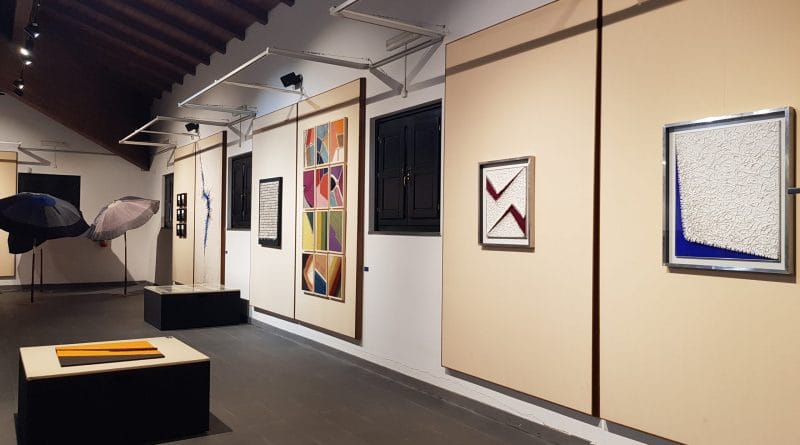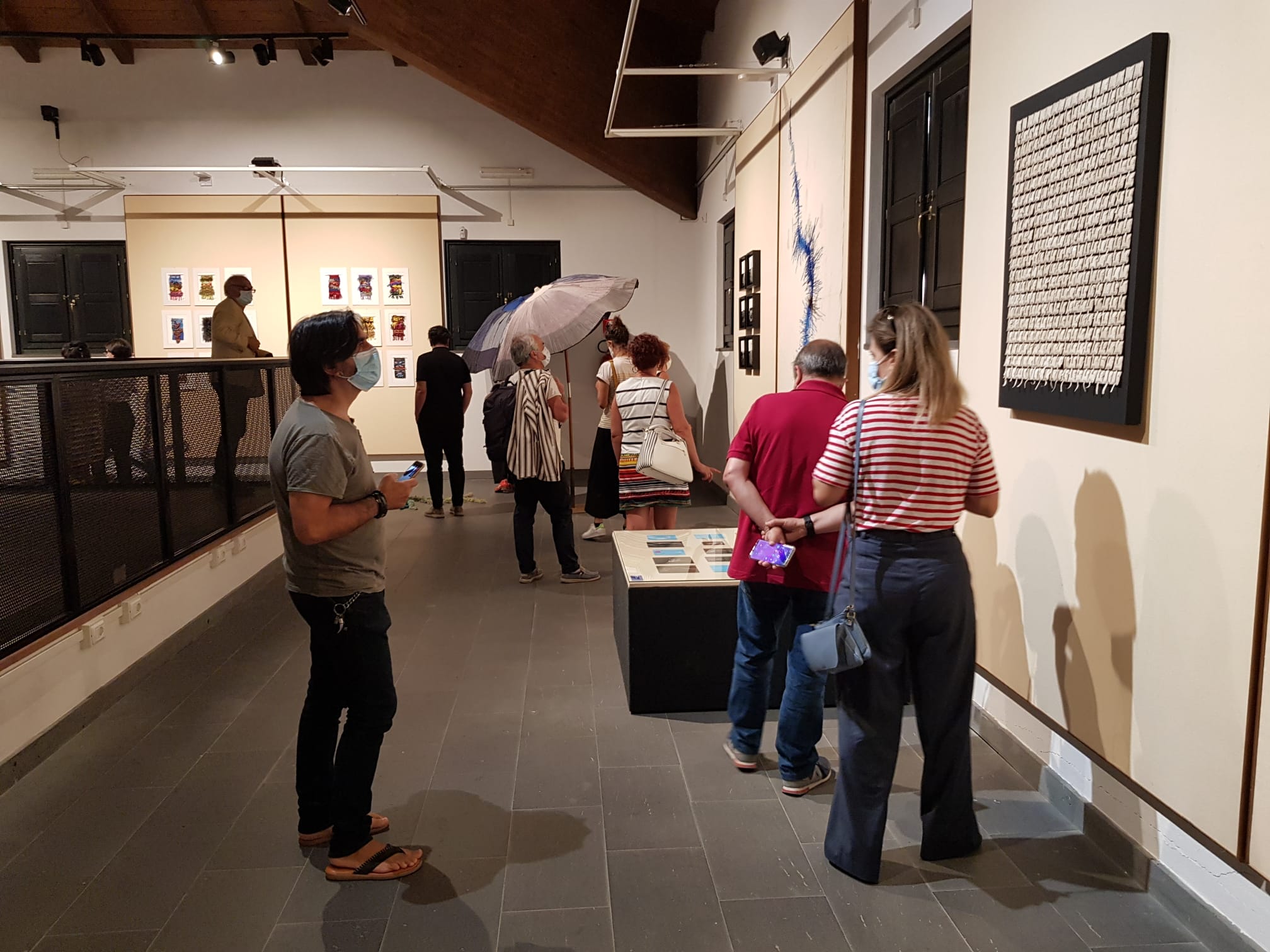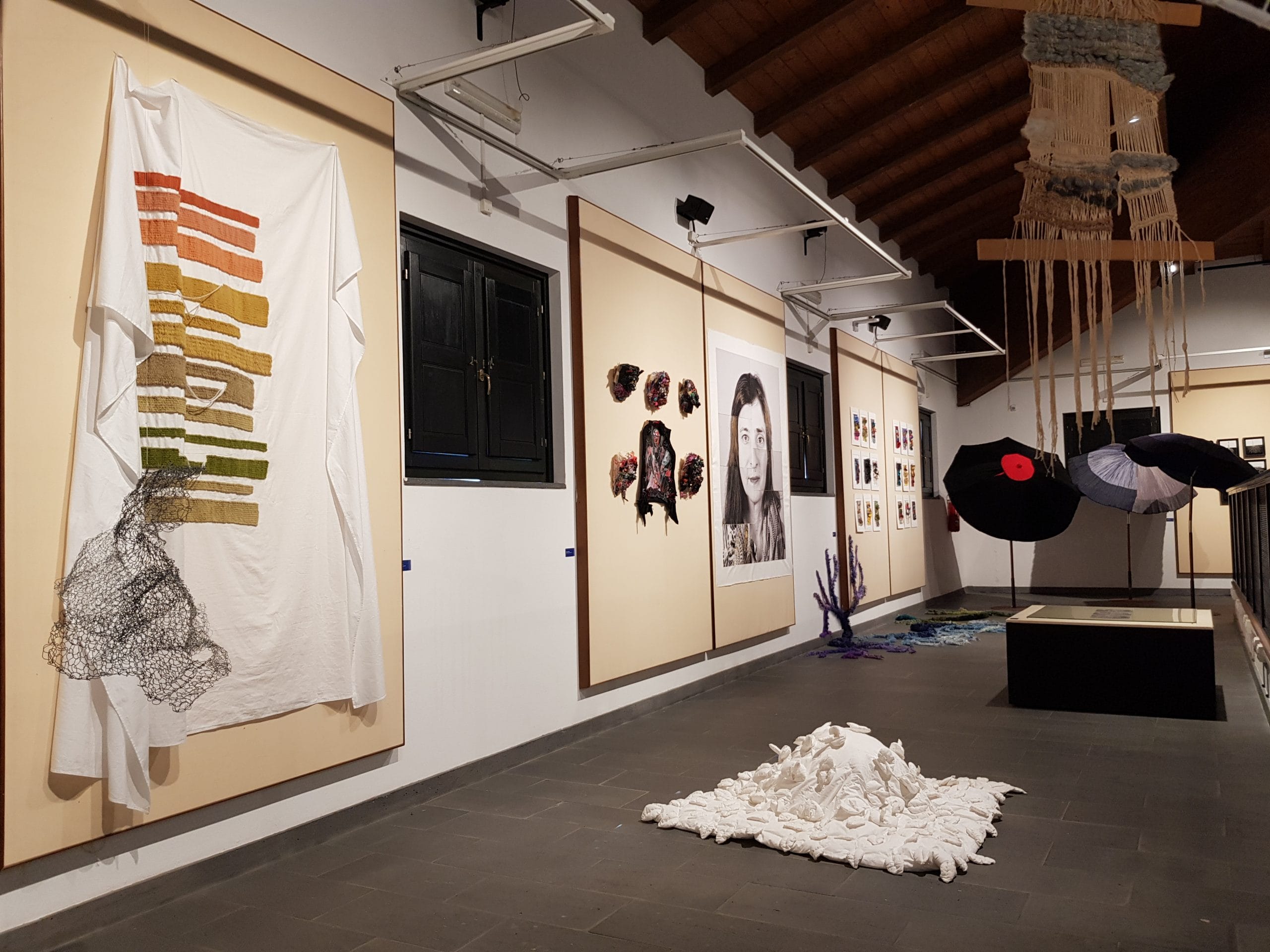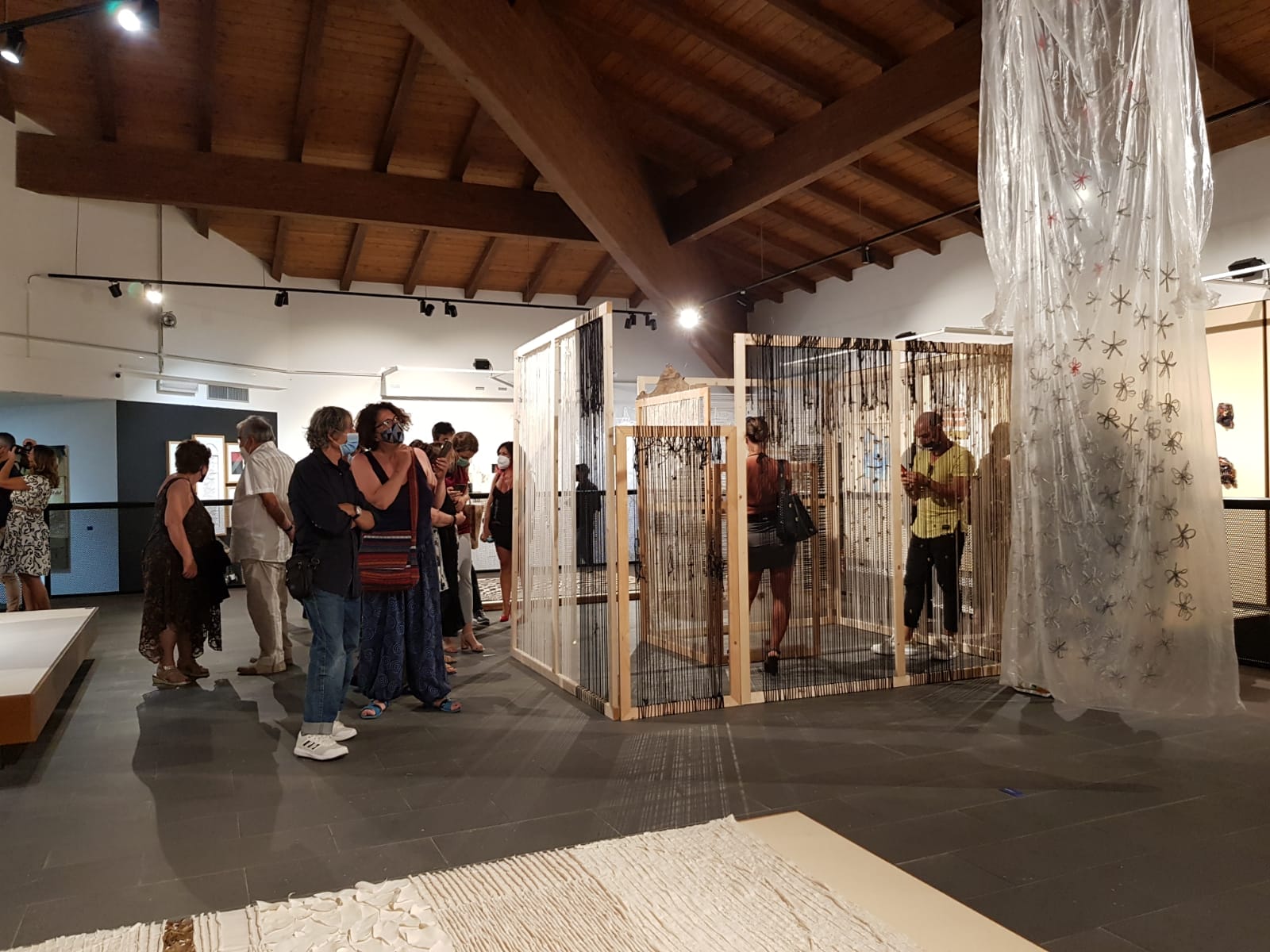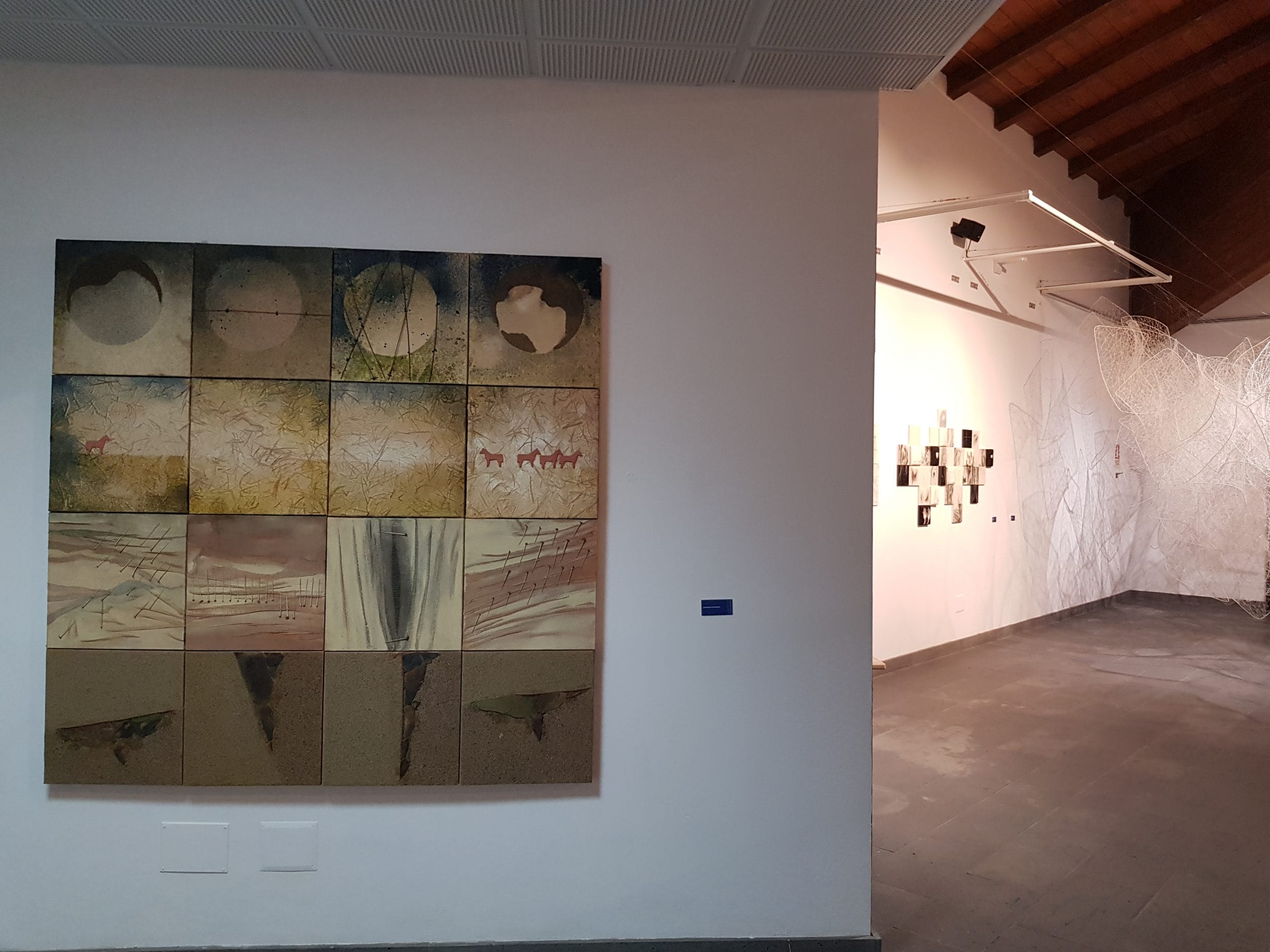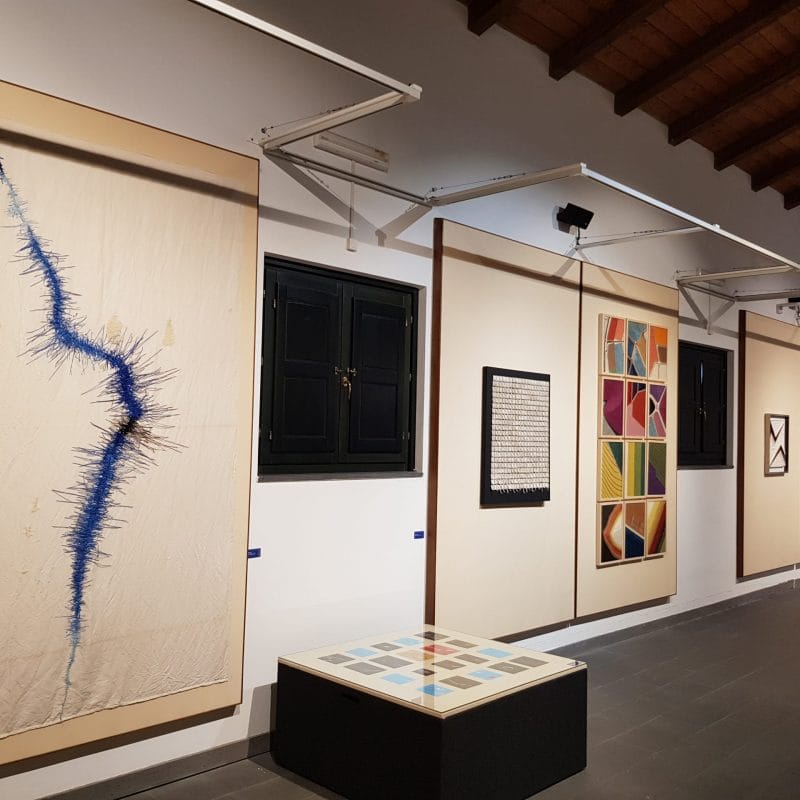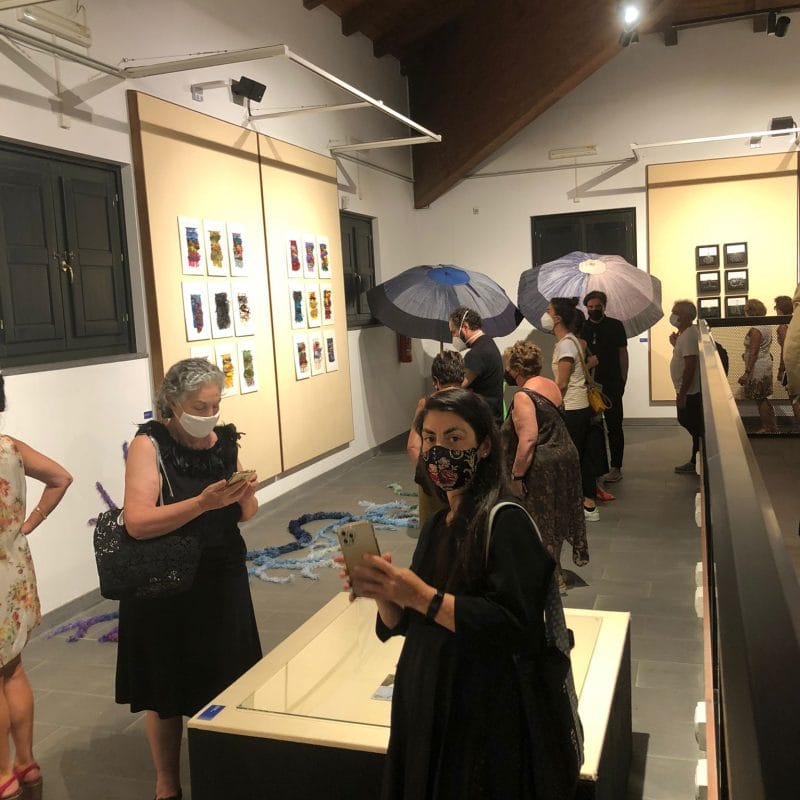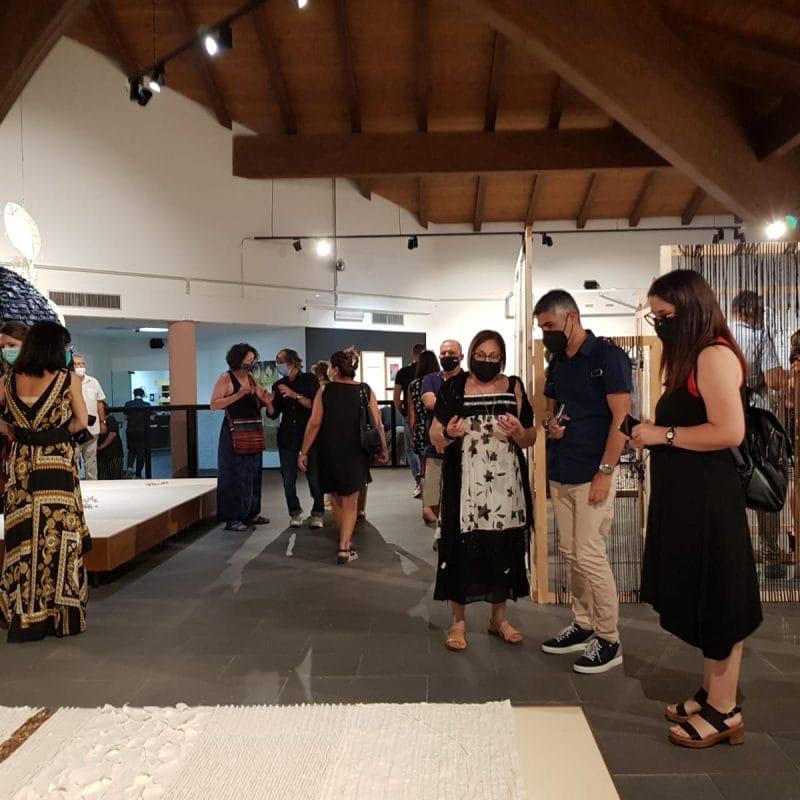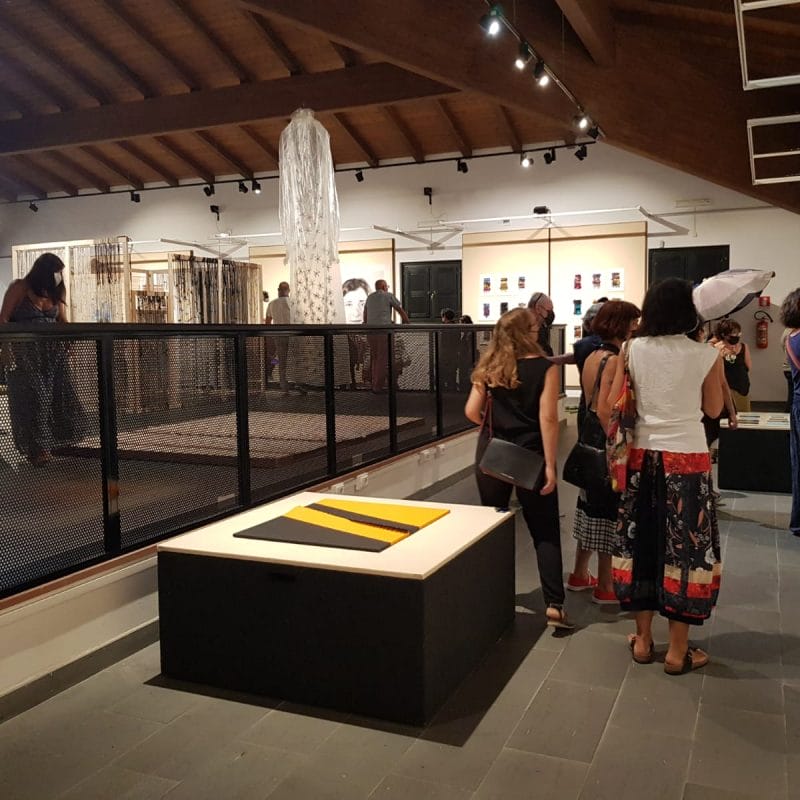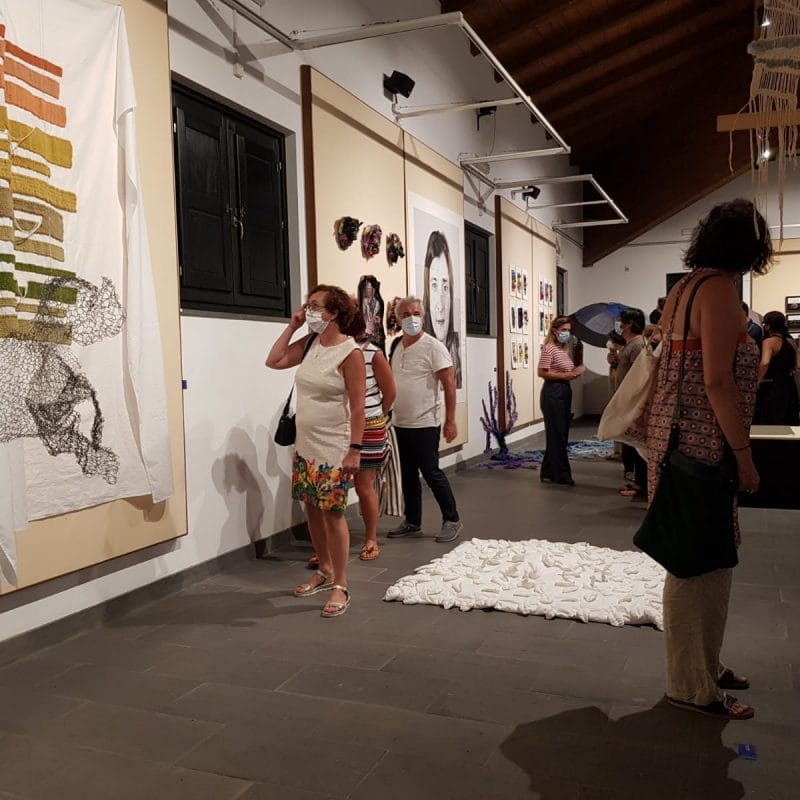Interview with Baingio Cuccu and Anna Rita Punzo, curators of INVENTARIO20
Translation by Marina Dlacic
Until November 14 at the MURATS Museum in Samugheo it is possible to visit INVENTARIO20 – Biennial of Fiber Art of Sardinia, the second edition of an event that offers the public a comparison between the different expressive forms and the many souls of artistic research linked to the yarn and the textile world . Between historicized protagonists and young artists, the curators Baingio Cuccu and Anna Rita Punzo offer the public a multifaceted and exhaustive cross-section of the Fiber Art panorama of the island. I asked them to tell me about the past, present and future of this courageous project.
Courtesy MURATS – Museo Unico Regionale Arte Tessile Sarda
How did the idea of a Biennial of Fiber Art in Sardinia come about?
Anna Rita Punzo: In Sardinia the pragmatism of ancient textile craftsmanship, with its rich set of allegorical, metaphorical and figurative languages, has merged into the artistic sphere in the form of a dynamic and heterogeneous flow of energies and original results to which it was immediately reserved a stable and prominent place in museums, exhibitions and regional, national and international exhibition projects; over the years MURATS itself has dedicated ample space to this expressive current and to the works of artists who have based their research or part of it on the synthetic-conceptual translation and the creative manipulation of remnants, fabrics, embroideries, fibers, etc. .
We therefore felt the need to trace the threads of a univocal and at the same time multifaceted discourse aimed at defining the matrix, evolution and horizons of an artistic current which, while drawing lifeblood from the ancestral heritage of the regional tradition, has proved capable of telling and represent contemporary social and anthropological identities with vivid innovative force. Thus began a work of research, recovery, discovery and mapping of the works created by masters, precursors and new generations of artists, which proved to be so broad, complex and eclectic that it required an equally elaborate project: a biennial appointment, accompanied by its catalog, aimed at following the countless paths traced, traveled and in progress of the main regional events of Fiber-art. The Unique Regional Museum of Sardinian Textile Art (MURATS) of Samugheo, a place appointed to preserve and enhance the precious artifacts of the ancient tradition, was the most suitable cultural reality to organize and promote this event because it was able to highlight parallels and affinities between past and present and to foster a dialogical confrontation with artists and between artists, assuming the features of a forum open to collaborations, experimentations and projected towards the future. The first edition of INVENTARIO 20 was created in 2019, coinciding with the 100th anniversary of the birth of Maria Lai, which we honored by opening the exhibition with one of her works, chosen for the highly evocative title: Casa delle janas (Le fate operose).
Courtesy MURATS – Museo Unico Regionale Arte Tessile Sarda
What are the objectives of this event?
Anna Rita Punzo: We could summarize the objectives that we set ourselves to achieve through this project, which is still young and therefore in constant and fast evolution, in 4 fundamental points: first, to rediscover published and unpublished works, known or little known, the result of the experiments and research carried out by Sardinian artists who were the first to deal with thread, fiber, pulp and textile material of natural origin and synthetic manufacture, also through the multiple and polysemic conceptual, virtual and performative declinations of their use; second, to highlight the characteristics, inspirations, forms and ways of today’s expressions of Fiber-art in Sardinia, whose heterogeneous nature is constantly enriched by hybridizations with languages related to photography, painting, design etc .;third, to present, promote and enhance the work of young talents and, fourth, to create and encourage networks and collaborations with extra-regional cultural entities and realities, in order to overcome the problems linked to insularity and project the experiences born and matured in Sardinia in national and international artistic contexts.
How are the artists selected?
Baingio Cuccu: As far as the first edition is concerned, we tried to cover the widest possible time frame by inviting artists of all generations. This formula was also repeated in the second edition, in which however, we reduced the number of guests. The research lasts for the two years that separate one edition from the other, starting from a basic number of artists already known, and whose works we substantially know, to which are added, through research for exhibitions, events, students and new social networks names especially among the younger generations.
Then there is a tribute that is paid to an artist who is no longer alive, in the first it was for Maria Lai and in the second for Giuliana Fanelli.
Courtesy MURATS – Museo Unico Regionale Arte Tessile Sarda
MURATS has recently inaugurated the second edition. What are the differences – if any – compared to the previous edition?
Baingio Cuccu: We made a different choice regarding the number, for the first edition we arrived at about 40 names in the second we preferred to stop at 25, for two main reasons: with the first edition we wanted to highlight the fact that there are many artists who have worked (even unconsciously) and work using fiber art, while in the second we invited a smaller number of artists to focus on large works and installations.
A double curatorship is certainly a treasure for a Biennale as it allows for a comparison on a broader horizon and from different points of view. Can you tell us your professional experience for INVENTARIO20?
Baingio Cuccu: Double curatorship can have unexpected implications especially when it comes to group exhibitions, if on the one hand the work can be “divided” and therefore facilitated, on the other hand there is the risk of having different visions on the choice of artists and of their works. As far as our case is concerned, all this is facilitated by the fact that Anna Rita Punzo and I have known each other since university and we have a substantially similar vision. We know each other very well and therefore we know the characteristics of the other well. At divergent points, which can always arise, we complete ourselves with confidence in the other’s abilities.
Anna Rita Punzo: I have known Baingio Cuccu since we were young university colleagues and we discussed interests, programs and courses of study; that dialogue has never ceased and over the years has transformed into a solid and exciting professional collaboration that has led to the conception and co-curating of various exhibitions;the biennial is the most mature outcome of this two-part story animated by the common desire to give shape to a cultural proposal capable of creating attention, curiosity and engaging debates on the state and direction of art, and specifically of Fiber-art, in Sardinia. To enhance the present and look to the future without forgetting the recent past, it is essential to combine several gazes, catalyze different energies, explore alternatives, create collisions capable of producing positive forces, for this reason a co-curation is an added value, especially when there is esteem and trust in the colleague and his work.
Courtesy MURATS – Museo Unico Regionale Arte Tessile Sarda
The Biennale undoubtedly offers an overview of contemporary Fiber Art on the island. From your point of view, what is the state of the art today?
Baingio Cuccu: Surely in Sardinia there is always new ferment and always attention to artistic research even if the fact of living on an island involves a continuous confrontation with a deep-rooted tradition. Because of this it is possible to make some sort of classifications, there are those who remain imprisoned in this tradition, those who try to reject it almost as something harmful and avoid everything that binds them to Sardinia, thus losing the “thread” of history and those who , on the other hand, manage to make a fruitful synthesis by leaving the didactic banality and concretizing a transversal look at what the island is, that is, what is outside. The latter manage to carry out research that becomes identifiable with the Sardinian but at the same time international environment.
Anna Rita Punzo: It is known that the origin of the expression “The state of the art” is the English phrase “State of the art”; Well I feel like answering the question using a well-known play on words: “State of the heart”, literally “The state of the heart”, by extension of the feelings, sensations, emotions, perceptions of the human soul, in a word of life. Fiber-art in Sardinia is more and more a visual translation of poetic, ironic, irreverent, sometimes painful and tearing stories, full of socio-cultural connotations, born from the need to tell and tell about today’s society, in the biographical / autobiographical micro dimension and in the collective macro-reality. The artistic results can reconcile techniques and expressions of traditional culture with processes of conceptual abstraction and simplification that enhance and / or support the materials, or distort their intrinsic properties in ever more courageous and daring ways.
Courtesy MURATS – Museo Unico Regionale Arte Tessile Sarda
Sardinia has in fact a traditional heritage linked to important textiles. Do you think this can sometimes be cumbersome for young Sardinian artists approaching Fiber Art?
Baingio Cuccu: Exactly, the textile tradition is complex, widespread and inherent in the productive imagination of Sardinian society. Everyone is well aware of the loom processing carried out by our grandmothers, and even those who have not been able to have this type of direct experience have undergone this sort of “presence” that reverberates even in artistic production. Especially for young people it is almost natural to deal with this tradition which does not remain relegated to physical production but which also borders on an immaterial legacy such as that of symbolism.
Anna Rita Punzo: More than cumbersome I would say stimulating, capable of instilling new and daring research and at the same time a source of inspiration, of nourishment for experimentation, rereading, reformulation in a contemporary key of ancient techniques and traditional iconographic apparatuses. Young artists do not succumb to the flattering fascination exerted by the possibility of indulging in banal stereotyping and affected quotations of the precious regional textile sector because they are aware of the important witness received and honor it by dedicating themselves with commitment to work, research, and the mixture of knowledge. They are plants with tall foliage, they scan the horizon, look beyond, elsewhere, but their roots sink into the earth from which they draw nourishment for their artistic work.
Courtesy MURATS – Museo Unico Regionale Arte Tessile Sarda
What is the response from the Biennale to the public and professionals not only on the island but nationally and internationally? Is it – or can it become – an important vehicle for giving visibility and opportunities, for example to experimentation in this field by younger artists?
Baingio Cuccu: It is an appointment that immediately aroused interest as an unprecedented event on our island but which, as already mentioned above, has great potential due to the substrate of our textile tradition. The request that is often addressed to us by regional and national experts is the possibility of having the catalog, which is foreseen in the realization of the projects. This aspect makes us understand that we are on the right path to make INVENTARIO 20 an expected and desired appointment.
What are the future projects for the Biennale?
Anna Rita Punzo: The third stage of this research and mapping process will be reserved for the new generations and emerging talents of the regional territory who are dedicating themselves and / or are beginning to explore the infinite interpretative possibilities of Fiber-art.Already in 2019 and now for the second edition, we have given ample space to young Sardinian artists, creating exhibition itineraries that put their creations in dialogue with works by masters and well-known personalities at national and international level; with the 2023 edition, the entire narrative will be mainly the prerogative of emerging creativity. The third biennial therefore intends to intercept, give voice and become a sounding board of visions, energies, projections and planning of the art of tomorrow and at the same time provide tools for growth, dialogue and comparison through the organization of laboratories, workshops and meetings aimed at weave bonds, create synergies and intergenerational collaborations.
